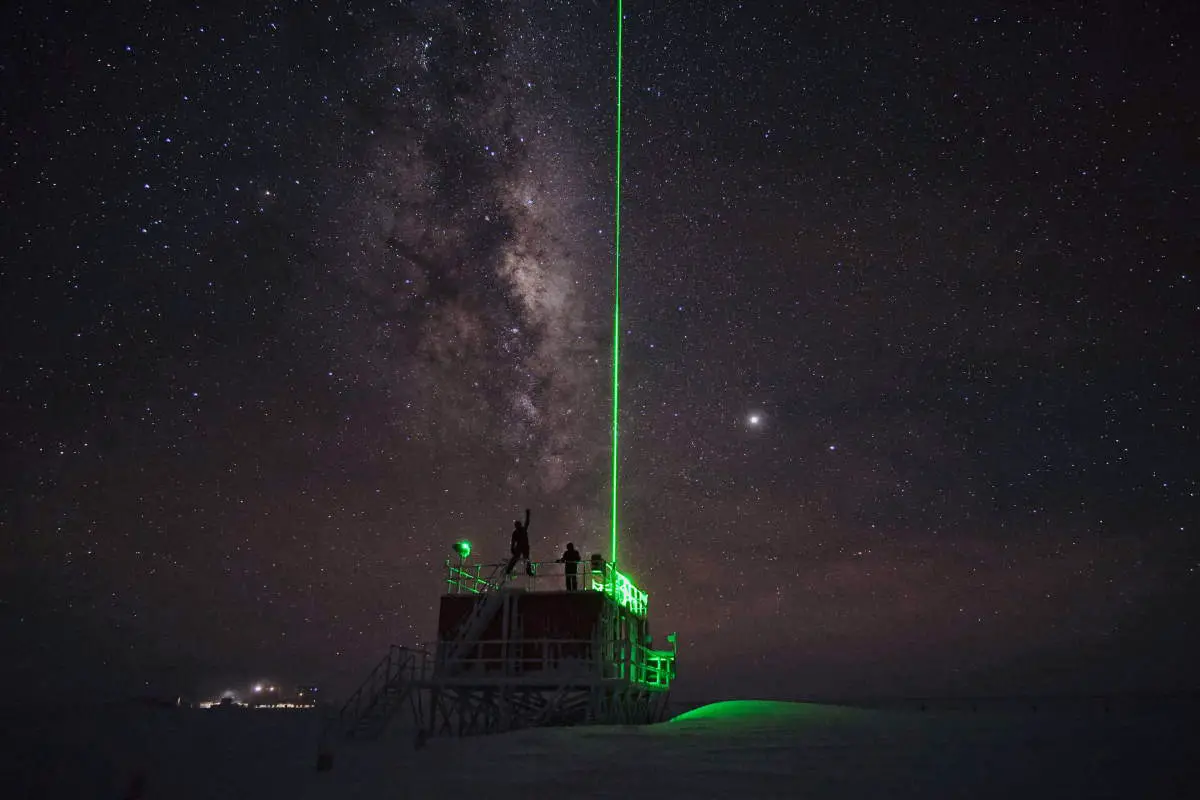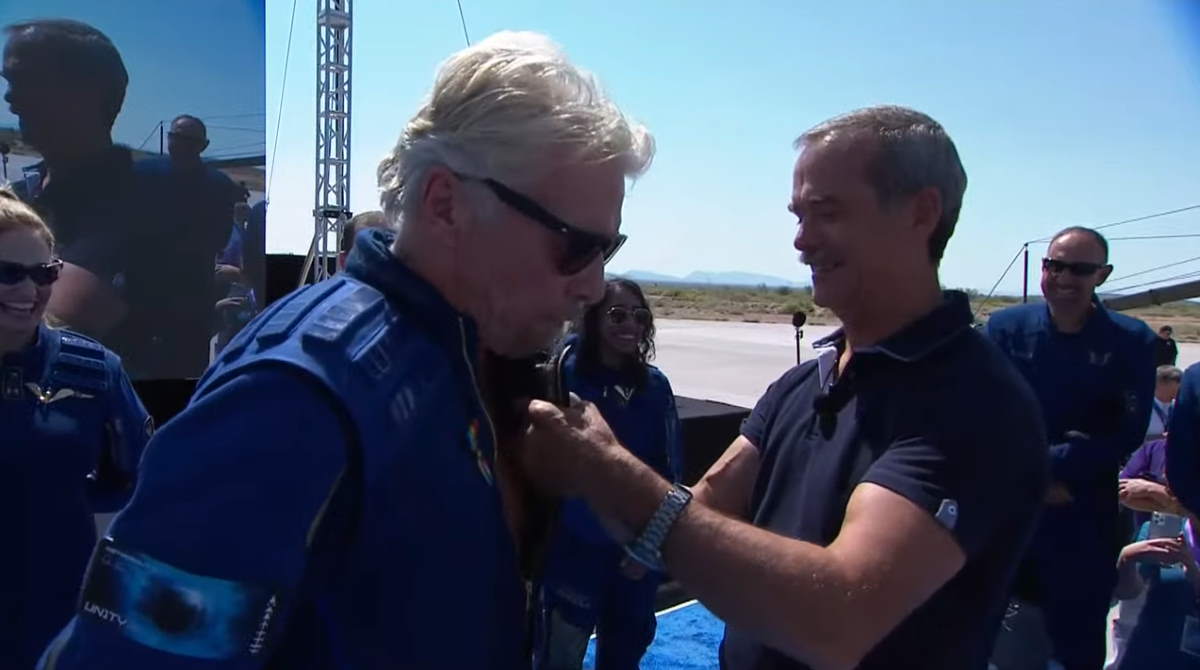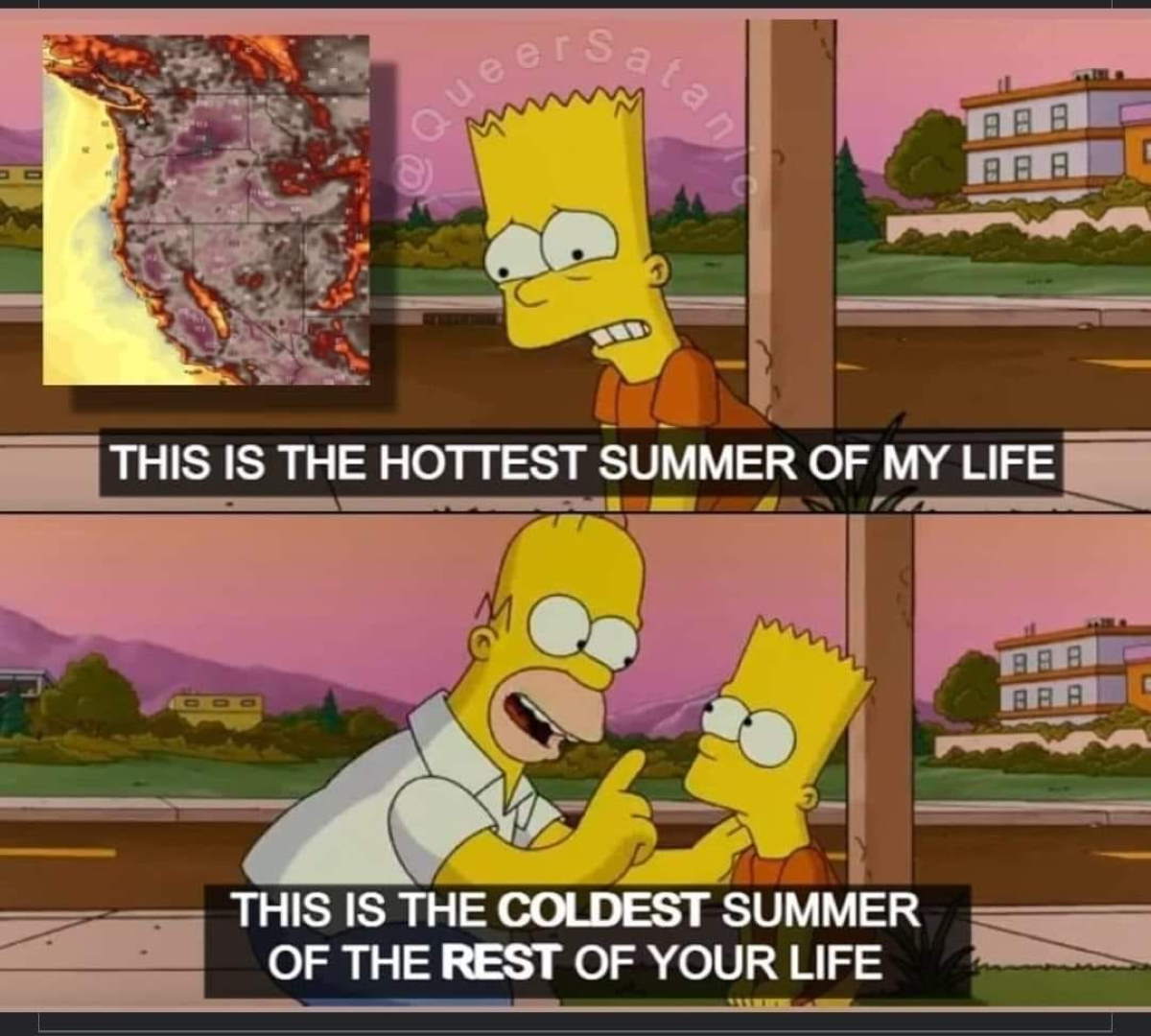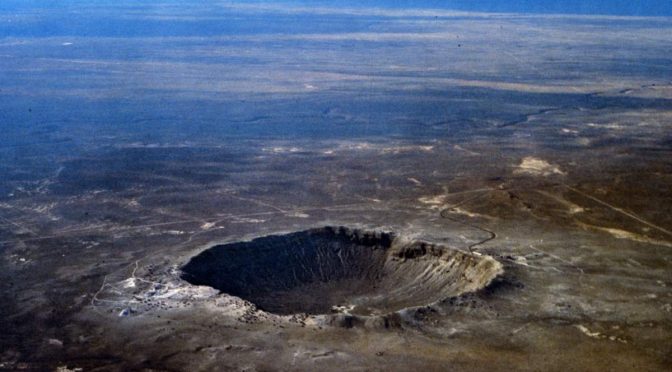Lidar (Light Detection and Ranging) is a laser-based remote sensing tool that can measure the concentration of small particles, called aerosols, in the atmosphere. Monitoring aerosols is crucial for climate modeling, air quality measurements, and understanding the health impacts of atmospheric pollution. However, existing lidar systems require sophisticated and expensive equipment and are usually deployed by research technicians. They also have trouble measuring atmospheric pollutants near the ground, where they impact human health. Scientist Dr. John Barnes at NOAA in Boulder, Colorado, and his colleagues have developed an inexpensive and straightforward commercial lidar solution using widely available camera and optical equipment.
Continue reading “Monitoring Atmospheric Pollution with Laser Imaging”Hadfield decorates Richard Branson with Astronaut Badge
Today, On July 11, 2021, a new era in space tourism just opened up: by having flown its founder, Richard Branson, the British American spaceflight company Virgin Galactic became the first spaceflight company to independently launch a paying civilian into outer space using the 50-mile high definition of outer space (see notes 1). Former Canadian astronaut and the former commander of the International Space Station Chris Hadfield has decorated Branson with an Astronaut Badge.
Continue reading “Hadfield decorates Richard Branson with Astronaut Badge”10 Amazing Whale Shark Facts
The whale shark (scientific name: Rhincodon typus) is the largest member of the shark family and also the largest fish in the Earth’s oceans, can reach up to 18+ meters (60+ feet) in length, but this species is harmless to humans. Here are 10 amazing whale shark facts.
Continue reading “10 Amazing Whale Shark Facts”7 Oldest Trees in the World
The lifespan of trees varies greatly. Almost all trees outlive us, humans, and some of them can reach very old age (thousands of years!) depending on their species. Here is a list of the oldest trees in the world.
Continue reading “7 Oldest Trees in the World”Developing Sustainable Water Purification Technologies using Nanotechnology
A significant proportion of the world’s population has little to no access to clean water, and the water consumed by industrial activities continues to grow. Researchers from the Nanotechnology Enabled Water Treatment (NEWT) Center, which is headquartered at Rice University, are developing cutting-edge water purification technologies that can provide communities with access to clean and safe drinking water. They are also creating new wastewater treatment methods that allow the reuse of industrial effluent, to minimize freshwater withdrawals by industries. Instead of conventional methods that use large amounts of chemicals and energy, NEWT technologies are chemical-free, and often utilize solar energy.
Continue reading “Developing Sustainable Water Purification Technologies using Nanotechnology”10 longest-living animals
Humans can live up to 100+ years – which is pretty remarkable. But, some animals even outlive us. Here are the top 10 longest-living animals in the world.
Continue reading “10 longest-living animals”The Simpsons meme about global warming
A very worrying The Simpsons meme about global warming. Jokes are sometimes hit hard.
Continue reading “The Simpsons meme about global warming”Stardust is raining down on Earth
It is all around us. Every day in our lives we are in contact with it. In fact, we are made from it: ancient stardust.
All the atoms around us have witnessed the most violent explosions in the universe. Their journeys through space are the longest, roughest and loneliest voyages imaginable.
Dominik Koll, Australian National University
Continue reading “Stardust is raining down on Earth”Alternatives to Concrete for Sustainable Building
When most people think of construction materials, one of the first things that come to mind is concrete. This is not surprising when you realize that concrete is the most commonly consumed product on Earth after water.
Despite its popularity, however, concrete has adverse effects on the planet and its health. It releases a dangerous amount of carbon dioxide into Earth’s atmosphere, with the concrete industry making up 8% of overall global emissions.
Continue reading “Alternatives to Concrete for Sustainable Building”From Destruction to Creation: Understanding Meteorite Impact Craters
Ever since the planets first formed, they have been bombarded with space rocks. Asteroid and cometary collisions are so powerful that planetary surfaces fracture and melt beneath them, leaving behind huge craters. These impact events have played an important role in our planet’s history, by shaping the geological landscape, producing valuable minerals, and affecting the evolution of life. Dr. Gordon “Oz” Osinski from the University of Western Ontario, Canada, aims to understand this fundamental process on Earth, Mars, and the Moon – with important implications for space exploration, mining, and understanding the origins of life.
Continue reading “From Destruction to Creation: Understanding Meteorite Impact Craters”








